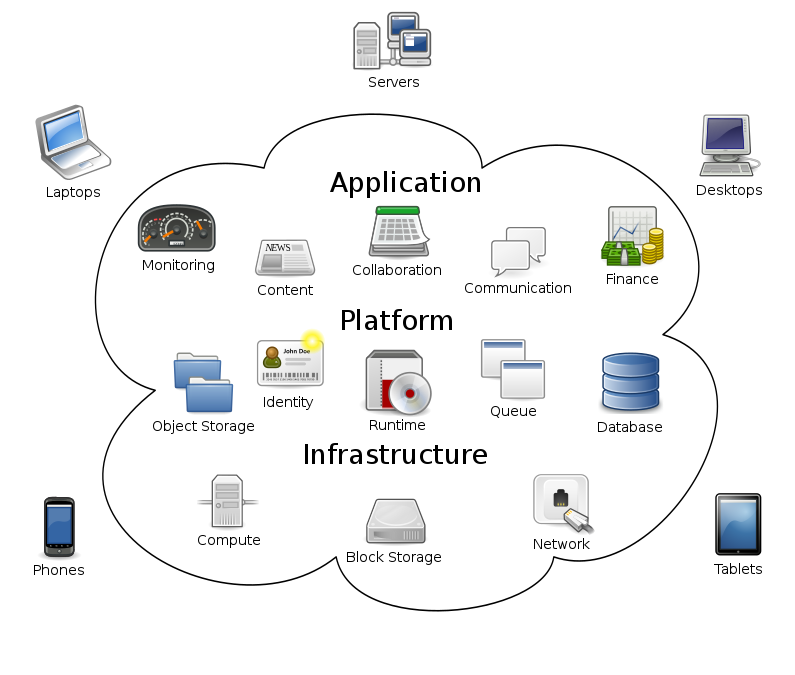In the ever-evolving landscape of cybersecurity, where threats are becoming more sophisticated and pervasive, organizations are seeking innovative approaches to protect their digital assets. Two such dynamic paradigms, cloud computing and Continuous Adaptive Risk and Trust Assessment (CARTA), have emerged as keystones in the realm of cybersecurity strategy. These concepts, seemingly distinct, are intricately intertwined, forming a symbiotic relationship that empowers businesses to navigate the digital domain with resilience and adaptability.
Cloud Computing’s Evolution and Significance:
Cloud computing has revolutionized the way businesses operate, enabling them to scale, innovate, and optimize their operations with unprecedented efficiency. By shifting from traditional on-premises infrastructure to cloud-based services, organizations have streamlined their processes, reduced costs, and gained flexibility. The cloud has democratized access to cutting-edge technologies, empowering even small businesses to harness the power of immense computational resources.
However, this transformational shift comes with its share of security challenges. Cloud environments, which store and process sensitive data, are prime targets for cyber threats. The shared responsibility model of cloud providers emphasizes the need for collaborative security efforts between the cloud service provider and the customer. Here’s where the synergy between cloud computing and CARTA becomes apparent.
CARTA’s Adaptive Security Approach:
Continuous Adaptive Risk and Trust Assessment (CARTA) is a paradigm that challenges the traditional reactive security approach. Instead of relying solely on perimeter defenses, CARTA advocates for a dynamic, risk-based strategy. It continuously monitors and assesses the security posture of an organization’s systems, applications, and data. CARTA takes into account contextual information, such as user behavior and environmental factors, to make informed decisions about granting or limiting access to resources.
This approach aligns seamlessly with the principles of cloud computing. Cloud environments are inherently dynamic, with resources being provisioned and deprovisioned on demand. CARTA’s adaptive security model is well-suited to the ephemeral nature of the cloud, as it can quickly adapt to changes in the environment while maintaining a vigilant watch over potential threats.
The Symbiotic Relationship:
The synergy between cloud computing and CARTA lies in their shared emphasis on adaptability and proactive risk management. Cloud computing’s ability to swiftly scale resources aligns with CARTA’s need for real-time data analysis to make accurate risk assessments. When an organization’s infrastructure is in the cloud, CARTA can leverage the cloud’s computational power to process vast amounts of data and make informed decisions about risk levels.
Moreover, the cloud’s vast storage capabilities facilitate the collection and retention of extensive data for CARTA’s analysis. Historical data about user behavior, access patterns, and system vulnerabilities can be leveraged to enhance CARTA’s accuracy in predicting and mitigating risks. As threats evolve, the cloud enables organizations to store and analyze new threat data, ensuring that the adaptive security model remains up-to-date and effective.
Challenges and Future Prospects:
While the relationship between cloud computing and CARTA holds immense promise, challenges remain. The interconnectedness of cloud environments can create complex attack surfaces, demanding careful orchestration of security measures. Additionally, ensuring the privacy of user data while implementing CARTA requires meticulous attention.
Looking ahead, the evolution of both cloud computing and CARTA is anticipated to be closely intertwined. As cloud providers continue to enhance their security offerings, incorporating adaptive risk assessment tools becomes a logical progression. Conversely, CARTA implementations will likely become more cloud-aware, leveraging cloud-native features for improved scalability and efficiency.
In conclusion, the marriage of cloud computing and Continuous Adaptive Risk and Trust Assessment (CARTA) exemplifies the dynamic nature of cybersecurity in the modern age. The cloud’s agility and scalability harmonize with CARTA’s adaptive security model, fostering a proactive approach to risk management. This partnership holds the potential to fortify organizations against an ever-evolving threat landscape, empowering them to navigate the digital realm with confidence and resilience. As technology advances, the synergy between these two paradigms will continue to shape the future of cybersecurity, ensuring a safer and more secure digital ecosystem.


